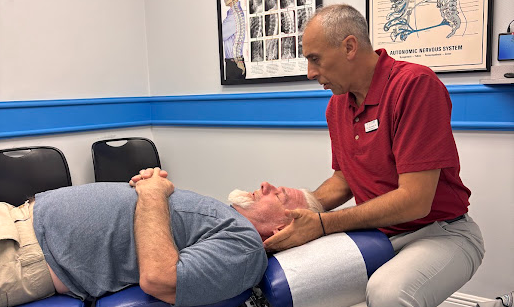Gut-Brain Issues: How Chiropractic Helps
The Gut-Brain Connection
The gut and the brain are in constant communication. For example when you feel nervous, your brain sends a message through this line of communication to your gut. That’s why you might get a “butterflies in your stomach feeling or feel like you might need to run to the bathroom. The communication also works the other way. If your gut is upset, for example from eating something bad or having a lot of stress, it sends a signal back to the brain. This can make you feel tired, moody or anxious.
Inside your gut, there are trillions of tiny microbes, known as good bacteria, that help to digest food and keep you healthy. If these microbes get out of balance, your gut may sent worry signals to your brain, through this gut-brain connection.
Gut-Brain Issues
Gut-brain issues happen when the gut-brain communication gets mixed up or stressed out. This can lead to stomach problems like pain, bloating, belching, nausea, diarrhea, constipation, cramping, indigestion, and can worsen digestive issues like ulcers or IBS. It can also cause mental or emotional challenges like feeling sad, worried or unfocused. These gut-brain issues are often called “disorders of gut-brain interaction” (DGBI) or what used to be known more commonly as gastrointestinal disorders. There may be challenges with motility through the digestive system, or in other words, challenges with the way food and waste move through the digestive system. There may be issues with sensation through the digestive system, where irritated nerves cause high amounts of pain. As well there may be issues with the communication between the gut and the brain.
How Chiropractic Can Help Gut-Brain Issues
Chiropractic care can help gut-brain issues by improving nerve function to the digestive system, by activating the parasympathetic nervous system, by reducing stress in the body, and by influencing vagus nerve function.
1. Chiropractic Helps Restore Nerve Function
2. Chiropractic Activates the Parasympathetic Nervous System
Chiropractic care can help activate the parasympathetic nervous system, often called the “rest and digest” system, which is essential for proper digestion. The autonomic nervous system (ANS) is the system that regulates involuntary functions like heart rate, digestion, and relaxation. The ANS has two main branches – the sympathetic nervous system, which is used for “fight or flight” and the parasympathetic nervous system, which is used for “rest and digest.” Chiropractic adjustments help to restore balance between these two systems. Spinal misalignments can overstimulate the sympathetic system. By correcting these, chiropractic adjustments can allow the “rest and digest” parasympathetic system to engage more fully.
3. Chiropractic Helps Reduce Stress
Chronic stress is known to have a negative impact on gut health. When the sympathetic nervous system, which is used for “fight or flight,” is overactivated, this leads to a state of chronic stress in the body. Chiropractic adjustments help to shift the autonomic nervous system balance from an overactive sympathetic state (fight or flight) and an underactive parasympathetic (rest or digest) to a more balanced state between the two. This helps the body exit a chronic stress state and enter a more balanced recovery-focused state. By calming the body’s stress response, this can improve nutrient absorption and reduce inflammation in the gut.
4. Chiropractic the Vagus Nerve and Digestion
The vagus nerve, which is one of the cranial nerves, controls the parasympathetic nervous system information from the brain to almost all digestive organs. It regulates stomach acid secretion, peristalsis (which is muscle movement in the gastrointestinal -GI tract), enzyme release from the pancreas, gallbladder function, and overall communication between the gut and brain. When the vagus nerve is functioning well there is more efficient digestion, reduced inflammation, and better gut-brain communication. The vagus nerve originates in the brainstem and passes near the upper cervical spine. Misalignments in the upper cervical spine can compress or irritate areas affecting vagus nerve signals or vagal tone. Chiropractic care focusing on the upper cervical spine, including atlas (C1), can help reduce interference with the vagus nerve.
A Natural, Family-Centered Approach
Our doctors at Great Life are specially trained through the ICPA to care for kids, parents, and families with a whole-body focus. We take a root-cause approach to gut-brain issues – addressing nervous system stress. We’ve seen children and adults go from constant bloating and stomach cramps to a healthy functioning digestive system – not because we treated the symptom, but because we helped their bodies regain balance.
Through nervous system-based chiropractic care, our goal is to help families step out of a chronic stress state and into a life of calm, connection, and resilience.
Taking the Next Step
Ready to explore natural, root-cause solutions for you or your family’s digestive or gut-brain connection challenges? Schedule a consultation with Great Life Chiropractic today to get started with a personalized plan for healing from the inside out.


